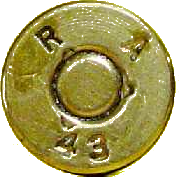Ysterhout Dot Net
Hunting Considerations
... or where ethics fits in.
Hunting is about bullet construction, downrange energy and ethical conduct.
Will the bullet hold together reliably at impact velocity, and is the retained energy at hunting range sufficient for a quick kill if placed correctly. That is all.
The hunting rifle itself is important only in that the platform needs to perform reliably.
There is a mis-perception commonly known as long range hunting. There is no such thing as long range hunting. There is only hunting, for which you need to make sure of three things
- can you reliably place a kill shot at that distance
- will your bullet retain enough energy to make a quick kill if placed correctly
- can you reliably find the animal for a follow-up shot if you wound it
When the hunter honestly appraises those three points and acts accordingly, most hunting takes place within 200 yards.
There are numerous hunting exploits, documented and recorded on video and publically available that show shots on game taken at long range. This is unethical hunting practice. Even if you can reliably head-shot deer at one mile, you should not. That is not hunting.
When the range is ridiculously long, the time it will take to get to the point at which the animal was wounded to begin the follow-up means a lost animal. Leaving an animal that you wounded to die a lingering death because you are careless and indifferent, is not hunting.
When the range is ridiculously long, the retained energy of the bullet may not be sufficient to make a kill, even if placed correctly. A hunter's sole purpose is to make a clean kill. Hoping for a kill at long range is just using live animals for target practice. A hunter does not do that.
Make sure that the caliber is suitable for the game being hunted. If in doubt, get one size bigger.
A suitable caliber is one that is generally accepted as adequate for the game being hunted.
Know the retained energy of the bullet at your hunting distance, and make sure it is sufficient for a quick kill with proper shot placement.
That is your responsibility as a hunter. Being ignorant of your responsibility does not void the responsibility.
However, ethics alone doesn't help you pick a hunting rifle.
You need to get to the point where you have determined what you intend to hunt, and identified for yourself the calibers suitable for that hunt.
You either have very specific hunting requirements, or not. If your requirement is not specific, you should consider a caliber that is generally accepted as adequate for the largest game you wish to hunt, and use it on anything smaller.
For example, you are a deer hunter, you want to cull the occasional coyote, and one in a while go for a black bear. The largest animal is the black bear, so you should choose something that is enough for black bear, and use the same on deer and coyote.
Part of your research into suitable caliber is finding out what caliber is successfully used for a particular game animal. Les Bowman, the originator of the 7mm Rem Mag, used a .270 Winchester for elk and brown bear. Hunting was his job, he was very successfull at it. Many others followed his example and were successfull also, making the choice reliable.
In my part of the world, you may be a biltong hunter and hunt up to blue wildebees or the occasional eland, in which case a 30-06 is a good choice. If you want to add the odd buffalo in there, you have to go for at least a .375 class rifle, H&H or Ruger. Nothing stops you from choosing a caliber bigger than you need. You may be that eccentric soul with a peculiar fondness for big boomers, and want to use a .416 Rigby for everything. You could, and it can.
The very famous exception was W.D.M Bell who hunted most of his elephant with a Mauser in 7x57 using full metal jacket ammo. You are not him, what reliably worked for him did not reliably work for anyone else, and the legal minimum for dangerous game these days is a .375.
History is littered with factual accounts of casual hunters going into the bush under-gunned and never returning.
After choosing the caliber, pay attention to bullet construction. For example, a Nosler Custom Comp is not a hunting bullet. A Nosler Partition is a hunting bullet.
The bullet you choose must be able to hold together at impact velocity, and reliably penetrate for a quick kill with proper shot placement. It it's of the expanding variety, the velocity on impact has to be above the threshold for expansion, and each bullet manufacturer will tell you what that is for their bullet. The velocity at a particular range can be calculated from a ballistic calculator.
Lastly, verify the maximum effective distance. This is the distance at which the caliber / bullet combination delivers sufficient energy for a clean kill. To determine this, you can navigate to the last page here - Predicting Long Range, and read up on how to calculate for yourself the retained energy of the bullet you will use at the range you intend to hunt. Compare your result to what is known to be an effective energy level for the animal on your intended hunt.
There are many sources for such information online, find them and read them. That is what a hunter does.



